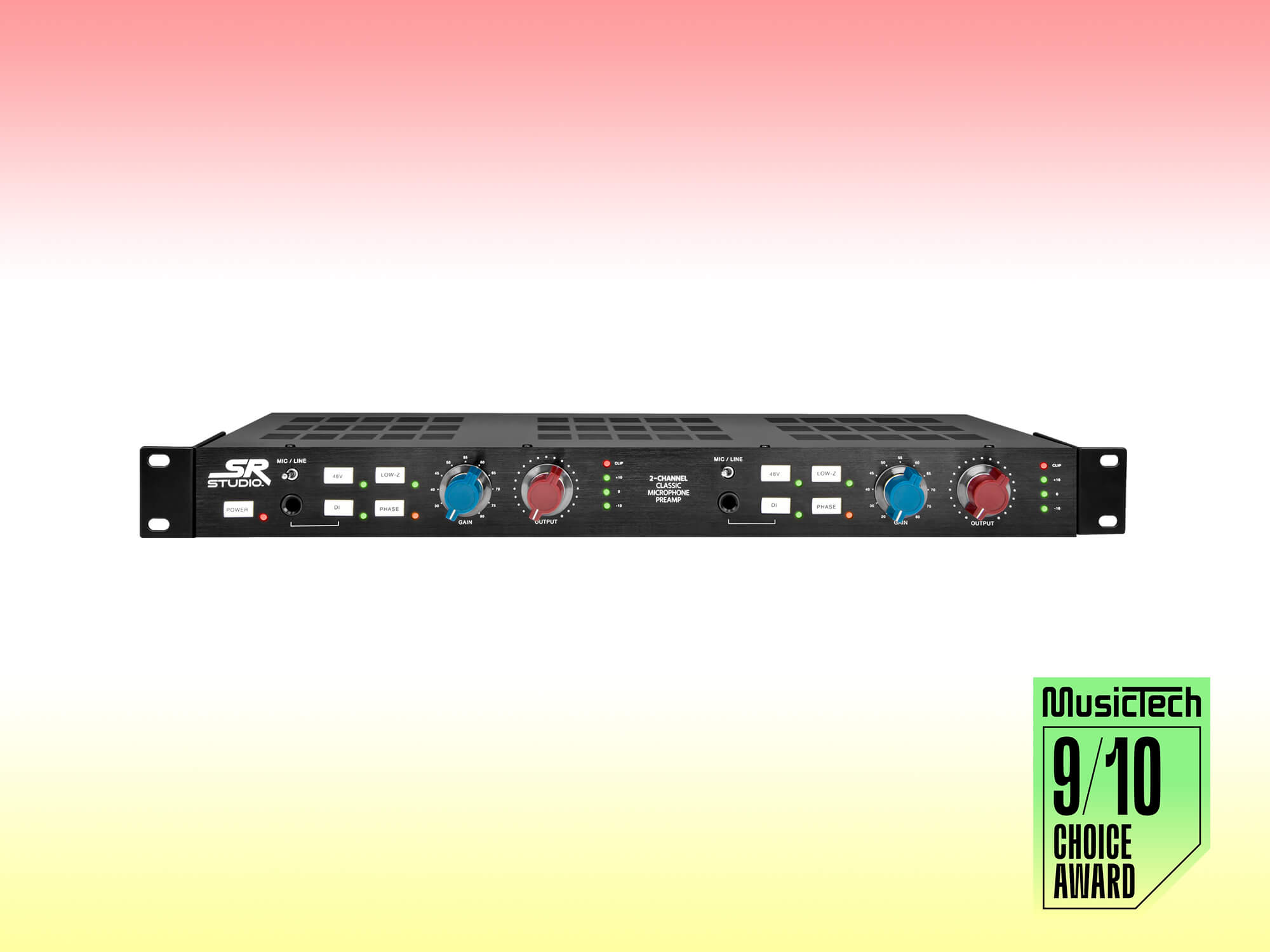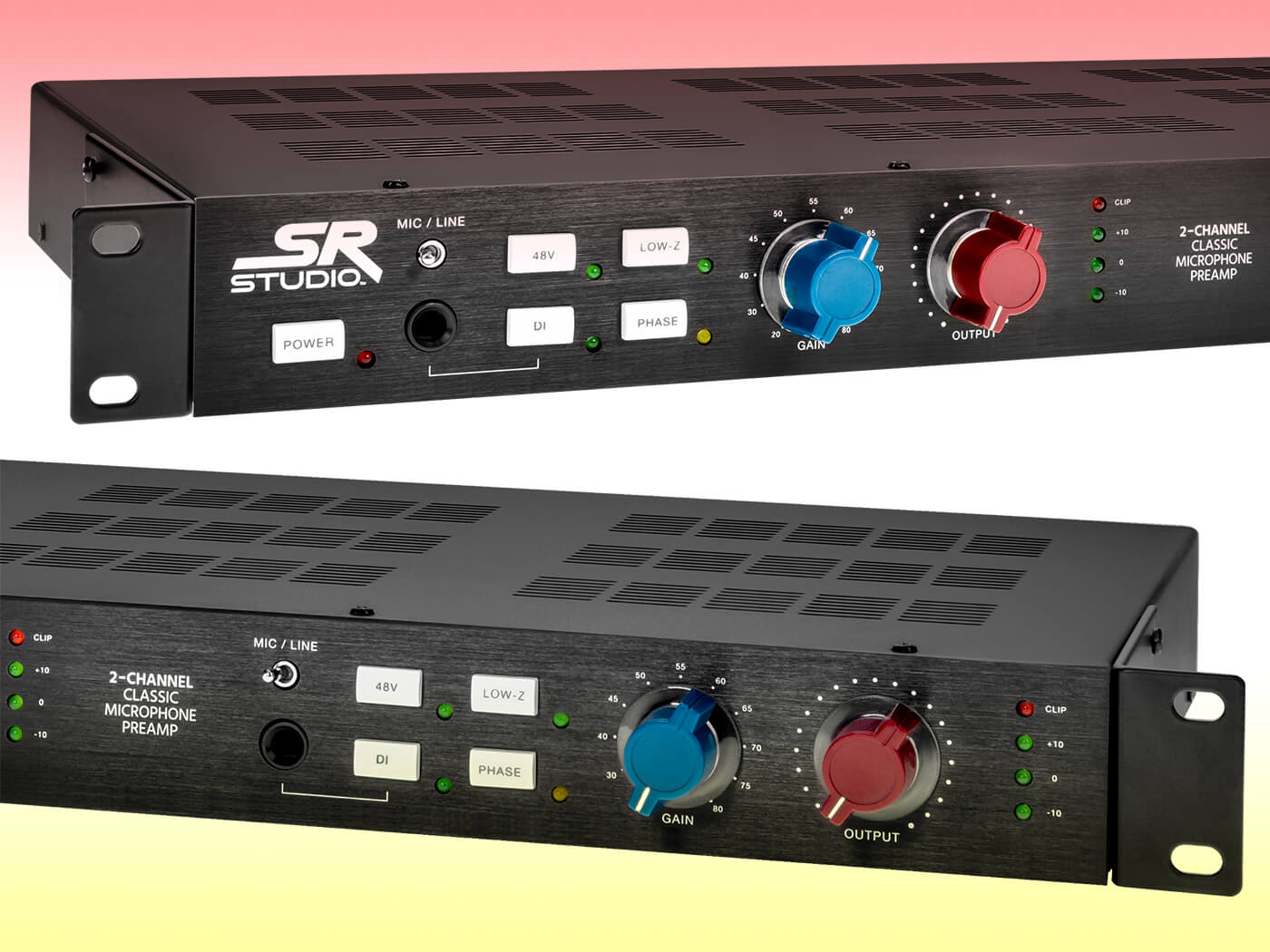SR Studio 1073-style preamp achieves a classic analogue sound at an extremely attractive price
Are your signals cold and sterile? Add warmth with this modern take on a vintage design from the golden age of solid-state equipment.

Monoprice SR Studio 2-Channel 1073-style Microphone Preamp
Review Overview
Our rating
9
Our verdict
⊕ Plenty of gain on tap
⊕ Easy to create various tones
⊕ Well constructed, inside and out
⊕ Amazing value for money
⊖ No high-pass filter
$599, monoprice.com
Neve’s 1073 preamp is a studio icon. But, today, just one module can set you back thousands of dollars. Thankfully, there are plenty of brands, just like Monoprice, who are offering a more affordable alternative.
Monoprice’s Stage Right range is a dual-channel microphone and line preamp based upon the classic Neve 1073 module. The original preamps first appeared in 1970, with 28 of them built into Neve’s A88 console, which became revered for its full-bodied, expansive ‘British’ sound.
- READ MORE: Austrian Audio’s MiCreator achieves no-nonsense stereo recording in a pocket-sized package
The design has been copied many times and we’ve reviewed several of them over the years – such as the diminutive Golden Age Project PRE-73 Jr and Warm Audio’s WA273-EQ, which emulates the design complete with the original console’s EQ section. Neve still offers a range of 1073 products, which feature its exclusive Marinair transformers, not found in any clones.
Though not an exact replica of Neve’s classic units, the SR Studio Stage Right’s front panel is neatly laid out in a conventional manner, without mimicking the quirky nature of the genuine 1073 design. The original (and currently available) Neve units employ an input gain control that allows access to either mic or line levels along various points of the dial. SR Studio’s unit, however, uses a nicely indented, blue colour-coded pot to adjust gain along with a toggle switch to select mic or line operation. It’s a far more intuitive approach and one we welcome as a nod to modernity, rather than slavishly copying the historic design. This pot also controls the input level for the DI (direct input), unbalanced quarter-inch jack socket.
Mic gain range is 20 to 80 dB; more than enough for even the most insensitive, power-hungry microphones, while gain is reduced by 30 dB for line mode. The adjacent, red output control adjusts the level of the output to your recording interface or the next unit in your signal chain to prevent overloading. It’s worthwhile experimenting with the input and output controls, as dialling-in more gain while easing back the output will add more preamp colour to your signal. Driving the gain harder into the input transformer enables the creation of some warmly saturated tones for added grit and edge. Looking inside the unit reveals a neat layout, however the transformers are unbranded. A quick query as to their provenance provides us with the information that they are based upon a Carnhill design.
Besides the switch for mic/line operation, there are push-button switches for phase (polarity invert), 48v phantom power, DI and Low-Z. Low-Z sets the impedance level of the mic/line and DI, with 300 or 1200 Ohms selectable in mic mode. This can be used to select the best impedance match for any given microphone or to simply alter the tonal character for effect; after all, you won’t damage your mics by selecting the ‘wrong’ impedance.
Each channel has a four-step LED output meter, with three green LEDs and a fourth red one labelled ‘clip’. Don’t be alarmed by the clip LED, as in normal operation it should illuminate occasionally on the highest peaks. Only reduce level to prevent clipping if the red LED illuminates too frequently.

On the rear panel each channel has a mic/line input via a combination ¼-inch TRS/XLR socket, which accepts balanced signals from microphones and line-level sources. Balanced output is available from either an XLR connector or the ¼-inch TRS jack; alternatively, the jack outputs an unbalanced signal when using a ¼-inch TS cable. An insert socket is included to facilitate an external outboard device such as an equaliser or compressor. Also on the rear panel is a barrel connector for the supplied 24v AC power supply.
Right from the get-go, it’s clear that Monoprice/SR Studio has successfully achieved its goal of creating a preamp with the classic characteristics of the original 1073. Recording acoustic guitar with an AKG C414 B-ULS shows off this character, which is, as the company says, warm, punchy, sweet and musical. It’s a sound that flatters most audio sources, working particularly well with rock and pop recordings of all types. It’s not the most neutral or transparent of preamps though — the original 1073 never was – yet it imparts a huge, larger-than-life sound that adds power to drum kits, for example.
Bass instruments are well served by the preamp’s firm and muscular low-end response, with none of the weak-kneed flub we remember from the budget, semi-pro consoles prevalent in the pre-digital age.
Be aware though, that unlike the vast majority of preamps available today, this design does not incorporate a high-pass filter. But then neither does Neve’s own, currently available 1073 dedicated mic pre. This lack of filtering needn’t be too much of a problem though, especially if you have a mic with an on-board high pass and, in any case, undesirable subsonic rumble can be subsequently filtered out within your DAW.
Also in keeping with the well-loved sonic signature of the 1073 is the top end response, which is smooth and sweet, coating the treble region with a glossy sheen. It’s not the last word in super-top extension though, as more modern, transparent preamp designs might offer an extra degree of air and sparkle.
Where most ultra-clean mic-preamps can’t compete with this one however, is in the midrange, which is richly detailed with a velvet-like texture; there’s no brittle grain or hardness here. This lends a distinct sense of realism and vibrancy to vocals for example, with none of the indistinct and tonally grey sound of lesser preamps.
As the mid band is so expressive and impactful, it lends itself to a touch of high end boost on certain sources; think of the 16kHz top boost from a classic Pultec-like equaliser to add a sense of air to pristine vocals, for example.
To make pristine, clean sounds more exciting, it’s worth experimenting with the relationship between the input and output controls. Increasing the input gain to work the transformer hard provides colour, with added harmonics, while really driving the output produces rich saturation for that authentic analogue vintage vibe. Try this out with a bass guitar plugged into the DI socket to hear this effect. And if you have an outboard compressor to hand, use the insert function to create a great ready-to-record bass guitar tone.
Monoprice is onto a winner with the well-built and budget-friendly SR Studio mic preamp. It has heaps of vintage analogue character and a real rock ‘n’ roll heart.
Key features
- 20 – 80dB gain
- Switchable 300/1200 Ohm impedance
- Switchable phantom power and absolute phase
- DI input for instruments
- 4-step LED output meter
- Insert jack for outboard equipment
- 20Hz – 20kHz frequency response (+/- 5dB)